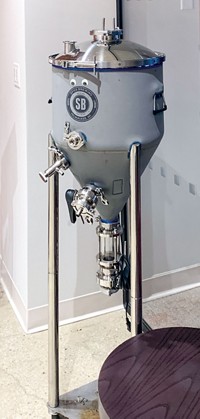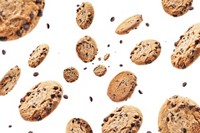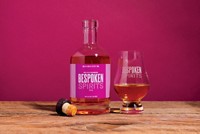Advertisement
Grab your lab coat. Let's get started
Welcome!
Welcome!
Create an account below to get 6 C&EN articles per month, receive newsletters and more - all free.
It seems this is your first time logging in online. Please enter the following information to continue.
As an ACS member you automatically get access to this site. All we need is few more details to create your reading experience.
Not you? Sign in with a different account.
Not you? Sign in with a different account.
ERROR 1
ERROR 1
ERROR 2
ERROR 2
ERROR 2
ERROR 2
ERROR 2
Password and Confirm password must match.
If you have an ACS member number, please enter it here so we can link this account to your membership. (optional)
ERROR 2
ACS values your privacy. By submitting your information, you are gaining access to C&EN and subscribing to our weekly newsletter. We use the information you provide to make your reading experience better, and we will never sell your data to third party members.
Food
Newscripts
Whiskey made DIY and by AI
by Craig A. Bettenhausen
October 6, 2019
| A version of this story appeared in
Volume 97, Issue 39
DIY whiskey

Whiskey is, in a sense, wood-flavored vodka. It’s complex, nuanced, and, many would say, lovely. It is a fairly pure mixture of ethanol and water that has had a chance to exchange flavor, color, and other molecules with charred or toasted wood. In contrast, vodka is a spirit that is treated to remove flavors, aromas, and colors.
For years, specialty retailers have sold kits and supplies that allow people to make their own whiskey-like spirit on a small scale. One option is a wood barrel, 3–20 L in size, that’s similar to the 200 L barrels, usually oak, used to age commercial whiskey. Another option is toasted oak chips or coils that soak with the liquor in a jar or bottle.
In all these DIY cases, the higher ratio of wood surface area to volume of liquid means that the liquor needs less time to age, and it takes on the desired flavors and colors in weeks or months instead of years.
Another classic home liquor hack is to take cheap vodka and run it through a charcoal filter, which is said to result in decent vodka. But what if the two methods were combined? Would filtering vodka and soaking it in wood chips make better DIY whiskey? Or would the charred areas of the wood chips do everything the charcoal filter does, saving a step?
The Newscripts gang took a bottom-shelf vodka and split it into three portions. We ran one portion through an activated charcoal filter six times. We placed one portion in a 500 mL round-bottom flask with activated charcoal and then redistilled it over a 50 cm Vigreux column. All glassware was from a set used exclusively for food and drink experiments. The third portion was left unaltered. Then we put 350 g of each portion and 10 g of toasted oak chips into 400 mL mason jars and set them aside.
The caramel color started to come through right away. Within 18 h, the jars were already the color of some lighter commercial whiskeys. After 27 days, the products were as dark as the darkest commercial whiskey, so we removed the oak chips using coffee filters. It was time to assemble our tasting panel.
We set up our best attempt at an at-home double-blind trial. We decanted the filtered batch, the charcoal-redistilled batch, the unaltered batch, and a midrange, commercial whiskey into identical glass bottles identified only with barnyard animal stickers as labels. Our panel rated each spirit on appearance, aroma, taste, and finish.
The highest combined score went to the filtered batch, followed closely by the commercial whiskey; the charcoal-redistilled and unaltered batches tied for last. After the identity of each sample was revealed, our panel agreed that the different prepurification methods had the most impact on the drink’s finish. With filtering scoring higher overall than redistilling and being much easier, that method is our winner.
Using AI to whip up whiskey

Want to get as far as possible from DIY booze while still making whiskey purists uncomfortable? Presenting Intelligens, which Swedish distiller Mackmyra bills as the first whiskey created by artificial intelligence.
The company feeds its recipes and current stock of available barrels, along with data on sales and customer preferences, into cloud-based, machine-learning systems provided by Microsoft and Finnish analytics expert Fourkind. The AI then comes up with recipes for the distillers to execute.
“The work of a Master Blender is not at risk,” Mackmyra’s master blender, Angela D’Orazio, says. Although the whiskey is AI generated, it’s also curated by humans, she says. “Ultimately, the decision is made by a person.”
The first bottles will arrive in stores this fall. Tasting notes for this batch describe it as “fruity and oaky, slightly salty and with a dryish end.”
Craig Bettenhausen wrote this week’s column. Please send comments and suggestions to newscripts@acs.org.





Join the conversation
Contact the reporter
Submit a Letter to the Editor for publication
Engage with us on Twitter